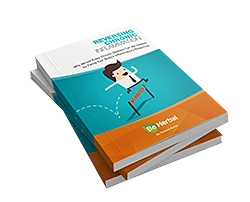One of the most referenced researchers in the field of positive thinking makes some very useful observations about what positive thinking can do for us. However, is positive thinking alone enough to help you achieve your highest goals?
Barbara Frederickson published a landmark psychology paper on Personal Social Psychology titled, “Open Hearts Build Lives: Positive Emotions Induced Through Loving Kindness Meditation, Build Consequential Personal Resources.” In this paper, Frederickson reveals some secrets that have been sought for decades now about how positive thinking affects our everyday lives.
Frederickson details how:
- Negative thinking narrows our views or reality, thereby limiting the possible solutions we may be able to create to solve our problems.
- Anger and other negative emotions can consume us to the point where we can’t get more productive things done.
- People who focus on images of joy or happiness were able to write down a larger number of actions they could take to make ‘good’ happen in their lives than people who focused on negative pictures.
Her study basically found that by thinking positively, you can increase a sense of possibility and your ability to see many options. Some call this creativity. Essentially, thinking positively builds real-life skills that can lead to success later in life.
What happens, though, when you find yourself consistently having negative, sad or depressed thoughts, even if you don’t want to? What do you do when you really desire to be a positive person, but self-defeating, self-limiting thoughts continue to keep you in a small, small world of your own design?
Consciously you want to be happy, successful and cooperative with others. Consciously you tell yourself that you won’t keep eating cake when you are trying to lose weight or that this will be your last cigarette. Then, sure enough, you watch yourself indulge in the very same behaviors, become depressed, beat yourself up and start another viscous cycle of negative thinking.
Carl Jung, the famous psychologist and errant student of Freud could sum up what’s happening to you quite well:
“There are certain events of which we have not consciously taken note; they have remained, so to speak, below the threshold of conscious. They have happened, but they have been absorbed subliminally.”
In essence, your subconscious mind is running the show.
Other researchers call this the two-tiered brain. While we may have success in some endeavors, including our desire to think and behave more positively, in other areas, we are doomed to fail until we address the lurking, deep, subconscious beliefs that may or may not be helping us get where we want to go.
If we look at a real-life example, a student’s ability to perform well on tests can be influenced greatly simply by what a teacher thinks of the student. In other words, if a teacher—someone of great influence in most young people’s lives—thinks that a student has great intellectual capacity, then that student will subconsciously absorb that belief about themselves, and do well academically. When a teacher thinks very lowly of a student’s abilities, then they will also tend to reflect this back in their own self-regard, performing to the teacher’s low expectations.
If a student really wishes to do well on a test, but has a subconscious belief that they are stupid or can’t perform well, then they will usually follow the subconscious belief, almost always superseding the conscious desire.
How to Change the Subconscious Mind
Past traumas, large and small, as well as positive beliefs, are stored in our subconscious minds. People who tend to realize their goals easily and can stay positive without much effort likely have a decent set of subconscious beliefs. These people only represent about ten percent of the population, though. The rest of us need to get into our subconscious minds and do some house cleaning. Until we remove the limiting subconscious beliefs, and replace them with self-actualizing ones, we’ll feel like Sisyphus pushing a boulder up a hill.
There are a couple of healing modalities which can help us to install positive subconscious beliefs, which then manifest as positive change in our lives:
- Subliminals – Think of these like positive thinking for the subconscious mind. The word is derived from Latin. “Sub” means below, and “limen” means threshold. The word means then, below a person’s threshold of awareness. While there is no evidence that subliminals completely out of our awareness work, there is a ton of evidence that proves images, words or auditory sounds placed just beneath our “threshold of awareness,” greatly influence our actions. Advertisers have been using this method to direct our actions for decades. We can use their same techniques to redirect self-limiting beliefs and turn them into self-empowering ones.
- Meditation – The reason meditation works to help some people realize their goals is because it helps to reveal limiting beliefs. When we sit in silence and simply observe our thoughts, we get to see just what kind of mud rises to the surface. Then we have a chance to make a conscious decision to accept that thought or choose a different one. Meditation can also reveal our underlying motivations for keeping a self-limiting thought in place.
- Psych K – Developed by Ron Williams, a 14-year veteran psychotherapist, Psych K has had such profound effects on people’s thoughts that it has influenced a healing in their bodies. Williams helped his own mother recover from cancer after going through Psych-K protocols that helped her uncover old resentments that were manifesting as disease in her body. When the resentments were released and replaced with more positive feelings of forgiveness and love, her cancer magically healed, leaving her oncologist in shock.
Limiting subconscious beliefs affect all aspects of our lives including: our relationships, self-esteem, financial prosperity, career choices and even our health and fitness. By accessing our subterranean beliefs, bringing them to the surface, and then healing them, we can get the most out of positive thinking and other conscious endeavors to create a whole and holistic life.


